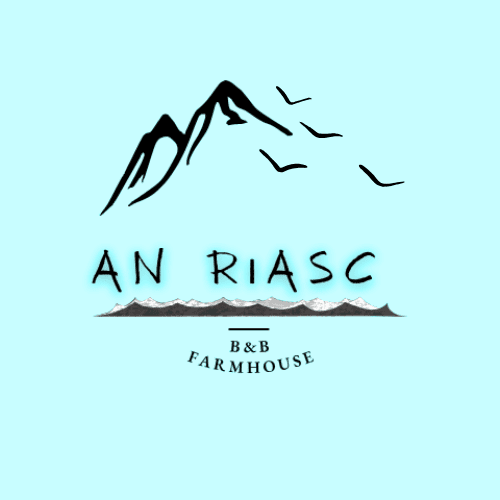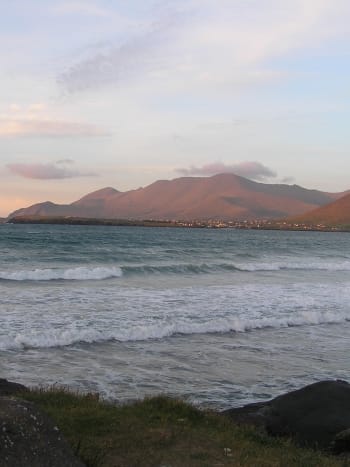Mystical Dingle: Sacred Sites, Standing Stones & Local Legends
The Dingle Peninsula isn’t just beautiful, it’s sacred. Across its cliffs, valleys, and open skies, you’ll find places that awaken a quiet knowing. From ancient standing stones to whispering monastic ruins, these landscapes hold a memory far older than words.
The Spirit of the Land
The Irish concept of “dúchas” means both heritage and belonging. On the Dingle Peninsula, that feeling runs deep. Locals don’t just speak of the land, they speak to it. And in certain places, the veil between worlds seems thinner.
These sacred places aren’t necessarily grand or showy. Some are marked only by stones, paths, or silence. Others are woven into local story, song, or pilgrimage. They remind us that long before GPS, people navigated by meaning.
Walking through these landscapes, it’s not uncommon to feel a sudden hush. A sense that you’ve arrived somewhere older than memory, and wiser than time.
“These are the places where the veil is thin, where the soul remembers its place in the story.”
Sacred Sites that still speak
Some places speak not with words, but with wind. Others hum beneath your feet or leave a hush in your chest that lingers long after you’ve walked on. Dingle is scattered with these places thresholds between the seen and unseen, where memory meets myth.
These sites are not just touristic highlights. They are echoes. Offerings. Reminders that before cathedrals and pews, worship was carried out beneath open skies, by stones, wells, firelight, and silence.
Mount Brandon: Ireland's Sacred Mountain
Towering above the western edge of the Dingle Peninsula, Mount Brandon (Cnoc Bréanainn) is Ireland’s second-highest peak and the highest outside the MacGillycuddy Reeks. But this isn’t just a mountain, it’s a pilgrimage site, a spiritual axis where land, sky, and myth converge.
Named after Saint Brendan the Navigator, the mountain carries a legend as vast as the Atlantic below. It’s said Brendan climbed the summit to seek divine guidance and saw a vision of the Promised Land of the Saints. This revelation inspired his legendary voyage west, long before Columbus, in search of a mystical island across the sea.
Yet Mount Brandon’s sacredness predates Christianity. Aligned with Lughnasadh, the ancient Celtic festival of the first harvest, the mountain was likely a site of sun worship, rites of renewal, and skyward offerings. Even today, its slopes echo those pre-Christian energies, a place where old gods still breathe through mist and stone.
Each year, on the last Sunday of July, locals and pilgrims alike take part in Garland Sunday, the Irish version of Lughnasadh. Traditionally a festival to honor the harvest and the land’s bounty, it was later Christianized but never lost its spiritual core. Climbing Mount Brandon on Garland Sunday is both a rite of passage and a ritual of devotion. Some walk in silence. Others sing or carry prayers. It goes behind a hike, it’s an encounter with something ancient, humbling, and transcendent.
The Dingle Way skirts the lower slopes of Mount Brandon, making it accessible to hikers and seekers alike. An Riasc lies in the mountain’s shadow, the perfect sanctuary to begin or reflect upon the journey.
Gallarus Oratory: The Church that withstood Time
A miracle of stone and spirit, Gallarus Oratory stands like a boat turned inward. A vessel to contain silence, prayer, and the breath of early monks. Built without mortar sometime between the 6th and 9th century, it is so well-fitted that rain and time have never broken through.
✨ It is said that if you crawl through its tiny window, your sins will be washed away and your soul reborn.
Tip: Arrive early in the morning for stillness — and golden light on ancient stones.
Reask Monastic Site: where Stones murmur
Just a short walk from Ballyferriter and minutes from An Riasc lies Reask, a place that rarely appears on postcards but lives in the memory of those who visit. It’s not grand. It’s not fenced off. There are no tour buses or ticket booths. What you’ll find is something quieter, older and perhaps more enduring.
Once home to an early Christian monastic community, Reask dates back to the 5th or 6th century. Today, all that remains are low stone walls, cross-inscribed pillars, and scattered fragments bearing Ogham inscriptions (the earliest form of Irish writing), etched vertically along the stone’s edge like secret prayers. These markings are rare and sacred, connecting us to Ireland’s linguistic and spiritual beginnings.
But Reask’s real power lies in its atmosphere. There’s a stillness here that’s hard to name. The wind carries a hush. The stones seem to remember voices long faded. Stand in the centre and you might feel something ancient stir, not in your ears, but in your bones.
This is a place where monks once chanted beneath open skies, where solitude was a form of worship, and where every carved line meant something eternal.
The site remains largely untouched by tourism. Most days, the only company you’ll have are birdsong and the occasional sheep. And that’s part of its grace. It doesn’t ask for attention. It invites contemplation.
Bring a journal. Sketch the stones. Sit in the grass. You don’t need to know Latin or Ogham to understand what’s being said. You just need to listen.
Just as the monks at Reask once sought silence and connection, An Riasc today welcomes travelers seeking the same : not through cloisters, but through open fields, shared breakfasts, and the hum of Atlantic wind.
In both places, there is a sense of return: from noise to quiet, from doing to being. The stones may have weathered, but the spirit of hospitality and contemplation endures.
To stay at An Riasc is to rest within the same landscape of devotion — to sleep where the land still whispers its prayers.
Slea Head: Where Land Meets Spirit
Slea Head Drive is one of the most scenic routes in Ireland (but to walk or to drive it slowly). It is a mythic procession, a ritual in motion, where land, sea, and story merge in something profoundly sacred.
As you follow its winding bends, the cliffs rise like cathedral walls, the Atlantic roars like a choir, and the stones at your feet whisper old names. This is a thin place, where the material world seems softened, and something beyond it, more vivid.
Along this route, you’ll encounter relics of Ireland’s spiritual and cultural soul:
Clocháns (beehive huts) — These ancient dry-stone huts, built without mortar, were once hermitages for monks and solitaries who sought silence in the elements. Their circular form speaks of continuity, eternity, and a life shaped by simplicity.
Standing stones — Rooted in the earth and aligned with the sun or stars, these monoliths mark seasonal shifts, sacred alignments, and sometimes graves. They are not decorations. They are invitations to pause, to ask, to feel.
The Blasket Islands — Just off the coast lie the Great Blasket and its sister isles, once inhabited by Irish speakers who lived close to the land and sea. These islands gave birth to some of Ireland’s most lyrical autobiographies, keeping oral tradition and spiritual resilience alive. Visit the Blasket Centre to glimpse their legacy.
Every turn in the road opens something: a question, a memory, a deeper breath. And whether you’re walking, cycling, or simply sitting to take in the Atlantic wind, the land feels alive as if aware of your presence.
It’s not about sightseeing. It’s about soul-seeing.
📍 Read more about the Slea Head Drive
⛴️ Book your Ferry in advance
📸 Bring a camera, but leave room for silence. Some things can’t be captured, only felt.
Stay Close to the Mystery: An Riasc
Nestled between Mount Brandon, Reask, and the Atlantic horizon, An Riasc B&B and Farmhous are a perfect sanctuary for spiritual travelers.
We regularly welcome pilgrims, artists, writers, and seekers looking for:
Stillness and natural beauty
Breakfast with a view of sacred peaks
Gardens that open to the silence of old land
📌 Located on Section 6 of the Dingle Way, An Riasc is both a resting place and a beginning.
Book your stay | Explore more sacred sites | Learn about our history
Tips for Visiting Sacred Sites
Go early or late in the day for quiet and golden light
Bring layers and waterproofs (the weather shifts quickly!)
Stay on marked paths to protect the land and yourself
Leave only natural, biodegradable offerings (if any)
Consider journaling, meditating, or sketching to deepen your visit
You don’t need to be religious to feel something sacred. Just open.
Other Sites to Explore Nearby
Kilmalkedar Church — early Christian ruins with sundial and ogham stones
Cill Mhaoilcheadair — hidden gem with deep spiritual resonance
Brandon Creek — where Saint Brendan’s voyage began
Cathair Deargán — a lesser-known stone fort in the hills behind An Riasc
There are places that remember. Dingle is one of them. It remembers the monks and the myths, the footsteps of pilgrims and the prayers of strangers.
Come not just to see — come to feel.
Come not just to learn — come to remember.
👉 Book your stay now | Meet your Host | Discover the Dingle Way






